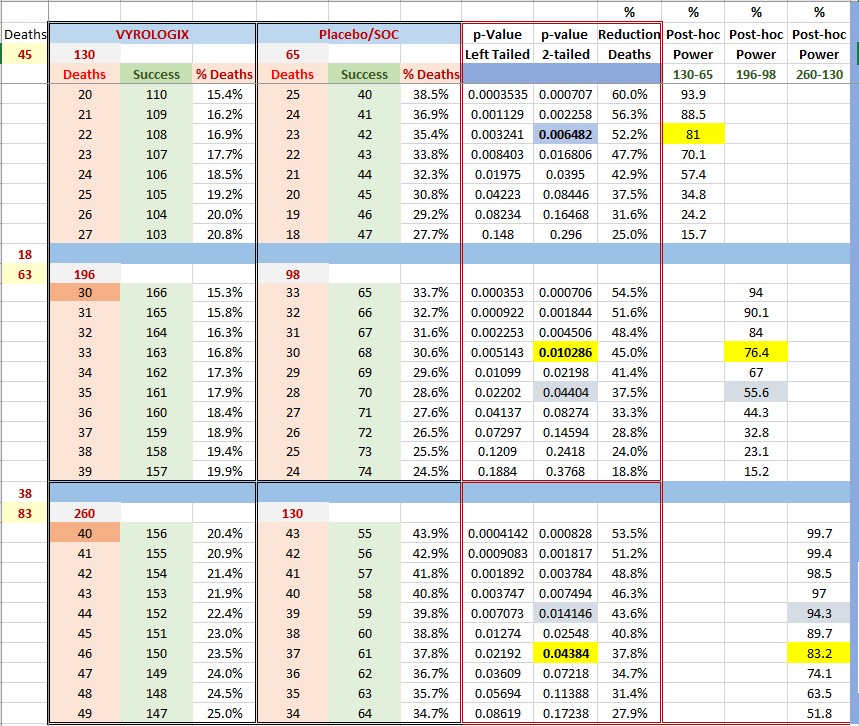So we are back to analyzing the full enrollment tr
Post# of 158164

Why does it make sense ??? Please refer to the table below. In the second section we can see that, needing a p-value of around 0.01 ( O'Brian criteria), Post-hoc analysis would indicate a power of 76.4%.

However, if we go full enrollment now we will need a p-value of 0.05 and our power will be larger than 80% (in my example we have 83.2% and a p-value of 0.0438).
Some conclusions can be drawn: meeting the primary point will be easier at full enrollment. Also, if we take into account the number of patients required, the trial was looking at a power of 80% not 90%.
For example, if we were to have a power of 90% we would need app. 516 patients (all other conditions being equal). Also, note from the table that what we are gaining is a power of 27.6% (83.2%-55.6%) by completing the trial. Please note: all these analysis are Post-hoc.
Now, to the important stuff. I assumed that the rate of deceases was smaller (38 vs 45) for the second half. I might be completely wrong (in number of deaths) and the numbers, of course will be different. However this gives us an idea that if we have a reduction of deaths of app.37.8% we are golden. That is, if the total number of deaths is 83 and Vyrologix/SOC ratio is 46/37.
Regardless, I still believe that even a 48/35 ratio (31.4% reduction) should be approved immediately . If my math is correct, that would mean close to 93000 lives saved as of today.
Isn't that enough ?????
PD: The table makes several assumptions and calculation methodologies, please use it only for broad reference purposes, also, it assumes numbers of deaths, information I don't possess. These can, and will probably change.
 (23)
(23) (0)
(0)